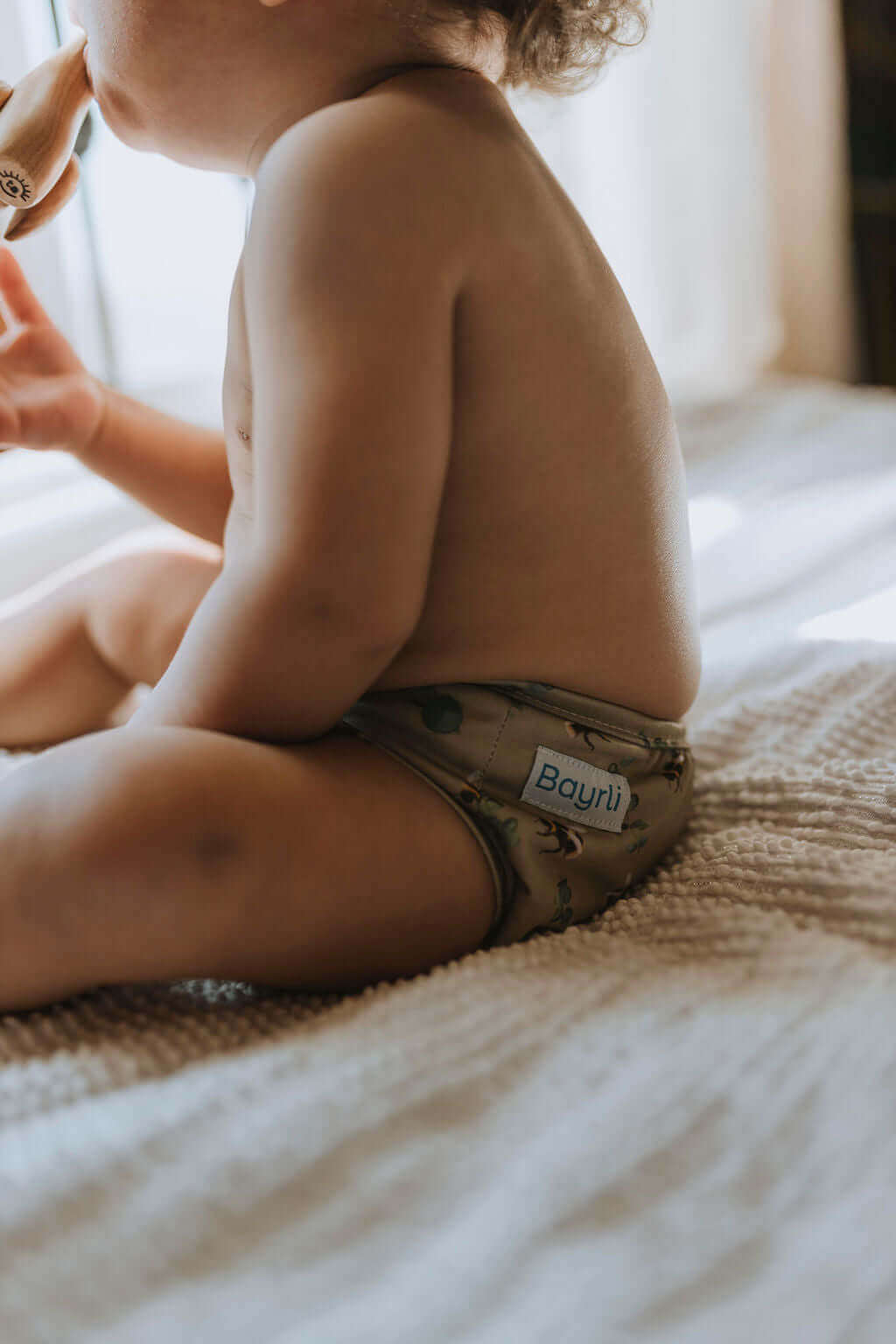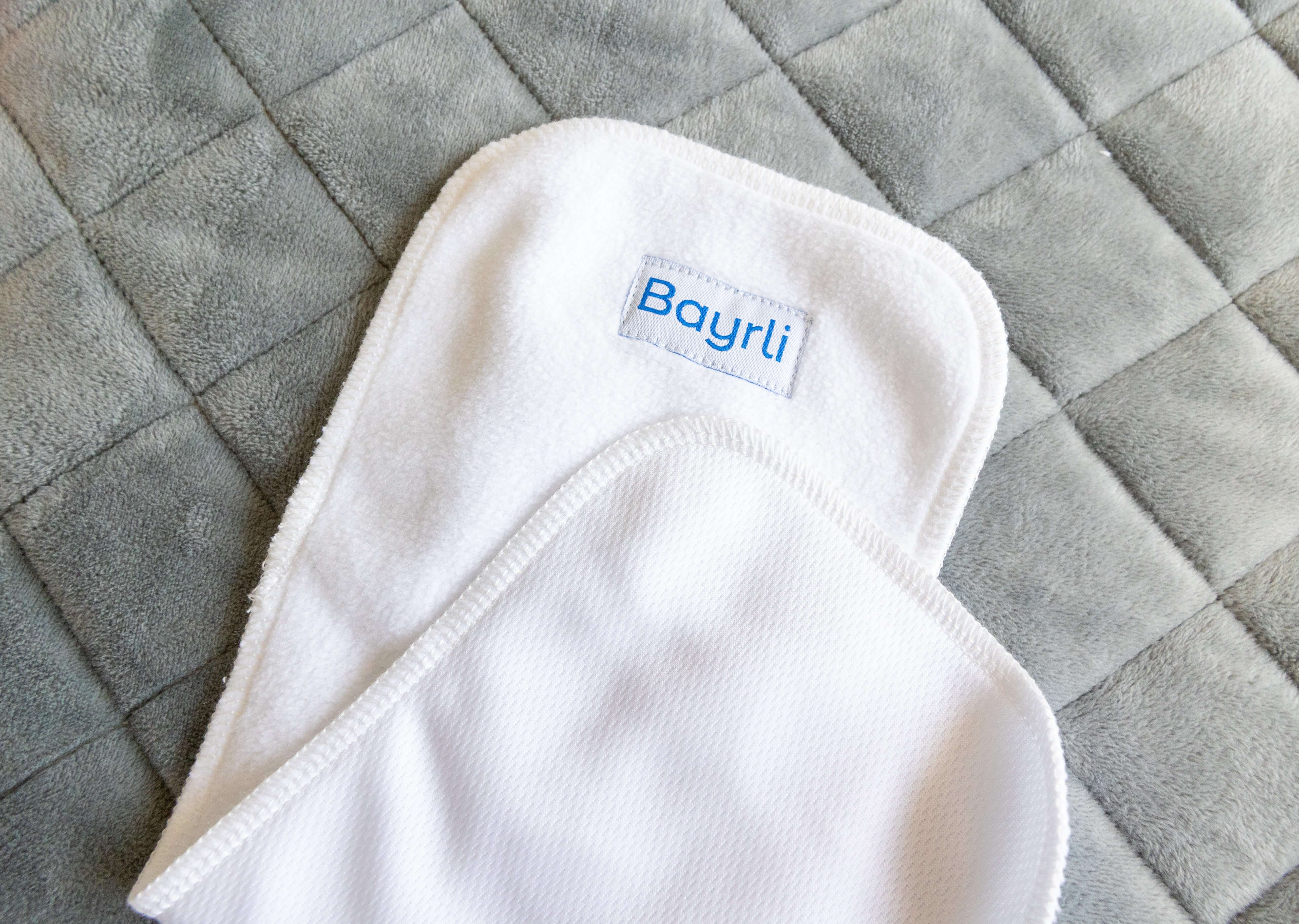
The Difference between Pocket Diapers and Diaper Covers
The critical difference between a pocket diaper shell and a cloth diaper cover is simply a piece of lining. This lining is sewn into pocket diapers but not into diaper covers. That’s it! However it must be said this lining fundamentally changes how you use and care for pocket diapers versus diaper covers. Both need absorbent inserts to be put inside them, and both are water-resistant. Let's discuss how you can use them on your baby.
Pocket Diapers
On the outside, they look just the same as diaper covers with a whole assortment of vivid palettes available. Some brands even have subtly different design philosophies. Here at Bayrli, we call them the Everyday Diaper, because we have designed them to be just that; the perfect pocket diaper for any parent either outside the home or on the go aimed to be used every single day. Our incredibly stretchy, comfy, and trim-fitting diaper is a breeze to use in any environment.
On the inside of a pocket diaper you will see a sewn-in lining. This lining is usually made from microfleece, microsuede, athletic wicking jersey (AWJ), or can even be made from natural fibers such as cotton, bamboo, or a mix of these materials. A pocket diaper has either one or two openings at the front and back of the diaper. We have chosen two for your convenience and by having two this also allows you to leave the inserts inside of the diaper and they can agitate out on their own in the wash. This opening is simply a gap, where the lining is not sewn to the PUL or TPU layer of fabric that you see on the outside. See more about the difference between PUL and TPU here and why we went against the grain on this for your baby’s protection.
Pocket diapers are designed this way so that absorbent inserts may be placed inside the pocket that’s created between the lining and the PUL/TPU layers. Placing inserts inside of that opening is called “stuffing” your pocket diaper.
Diaper Covers
The outside will look the same to both the trained and untrained eye, as they must fit securely to protect against leaks and blowouts. As many diaper covers also double as swim diapers this is essential.
Inside of a cover there is no lining. Some brands may have a button option for you to snap an insert inside, but this is it. The inside is designed to be wiped clean and reused so long as it hasn’t been soiled by your baby. This is why they pair perfectly with fitted diapers like our Inners. Our design does feature a centre snap at the front to secure in different brand inserts if you wish to use them. We also added front and back panels to secure loose absorbencies such as prefolds that you lay inside of the diaper cover.
Importance of the Lining in a Pocket Diaper
This inner lining inside a reusable pocket diaper provides a nice “stay dry” layer for your baby. The synthetic fabrics used to make the lining have wicking properties and they are easier to clean than most insert fabrics. The pocket diaper lining keeps your inserts in place and gives the diaper’s elastics a nice soft layer against baby’s skin.
Can I Use a Pocket Cover as a Diaper Cover?
In a pinch, absolutely. But they do fundamentally possess different designs, and don’t expect to be able to reuse them like you can a diaper cover.
If you choose to use a pocket diaper as a cover to eliminate the extra step of stuffing them with inserts, you may simply fold a flat or a prefold on top of the shell or pin the diaper on your baby first before fastening the pocket diaper over top. You can also use a dedicated Bayrli Inner inside if you wish. Inserts may also be placed in this way too, but please be advised that it’s not recommended to put microfiber directly touching baby’s skin as this is likely to lead to skin irritation.
Unfortunately, because the pocket diaper lining wraps all the way around the cloth diaper, and because most infants will pee so much that the insert will be soaked through, the lining will often become wet too.
Which is Better?
Is a big phone better than a smaller phone? All depends on your use and your situation.
This is the very same. Having both in your cloth diaper collection is certainly advised, but they do fundamentally offer different qualities for you to take advantage of. While both offer versatility and customization of the absorbency, they offer two entirely separate options to most parents.


